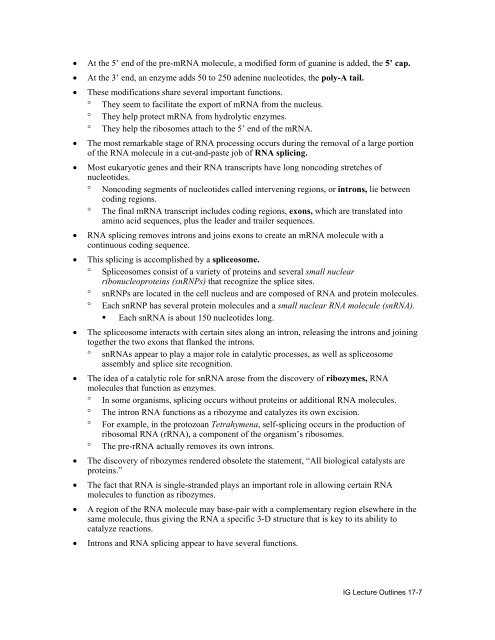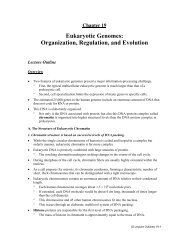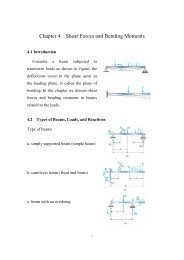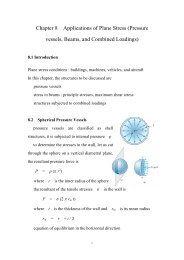CHAPTER 17 FROM GENE TO PROTEIN
CHAPTER 17 FROM GENE TO PROTEIN
CHAPTER 17 FROM GENE TO PROTEIN
- No tags were found...
You also want an ePaper? Increase the reach of your titles
YUMPU automatically turns print PDFs into web optimized ePapers that Google loves.
• At the 5’ end of the pre-mRNA molecule, a modified form of guanine is added, the 5’ cap.• At the 3’ end, an enzyme adds 50 to 250 adenine nucleotides, the poly-A tail.• These modifications share several important functions.° They seem to facilitate the export of mRNA from the nucleus.° They help protect mRNA from hydrolytic enzymes.° They help the ribosomes attach to the 5’ end of the mRNA.• The most remarkable stage of RNA processing occurs during the removal of a large portionof the RNA molecule in a cut-and-paste job of RNA splicing.• Most eukaryotic genes and their RNA transcripts have long noncoding stretches ofnucleotides.° Noncoding segments of nucleotides called intervening regions, or introns, lie betweencoding regions.° The final mRNA transcript includes coding regions, exons, which are translated intoamino acid sequences, plus the leader and trailer sequences.• RNA splicing removes introns and joins exons to create an mRNA molecule with acontinuous coding sequence.• This splicing is accomplished by a spliceosome.° Spliceosomes consist of a variety of proteins and several small nuclearribonucleoproteins (snRNPs) that recognize the splice sites.° snRNPs are located in the cell nucleus and are composed of RNA and protein molecules.° Each snRNP has several protein molecules and a small nuclear RNA molecule (snRNA).• Each snRNA is about 150 nucleotides long.• The spliceosome interacts with certain sites along an intron, releasing the introns and joiningtogether the two exons that flanked the introns.° snRNAs appear to play a major role in catalytic processes, as well as spliceosomeassembly and splice site recognition.• The idea of a catalytic role for snRNA arose from the discovery of ribozymes, RNAmolecules that function as enzymes.° In some organisms, splicing occurs without proteins or additional RNA molecules.° The intron RNA functions as a ribozyme and catalyzes its own excision.° For example, in the protozoan Tetrahymena, self-splicing occurs in the production ofribosomal RNA (rRNA), a component of the organism’s ribosomes.° The pre-rRNA actually removes its own introns.• The discovery of ribozymes rendered obsolete the statement, “All biological catalysts areproteins.”• The fact that RNA is single-stranded plays an important role in allowing certain RNAmolecules to function as ribozymes.• A region of the RNA molecule may base-pair with a complementary region elsewhere in thesame molecule, thus giving the RNA a specific 3-D structure that is key to its ability tocatalyze reactions.• Introns and RNA splicing appear to have several functions.IG Lecture Outlines <strong>17</strong>-7
















